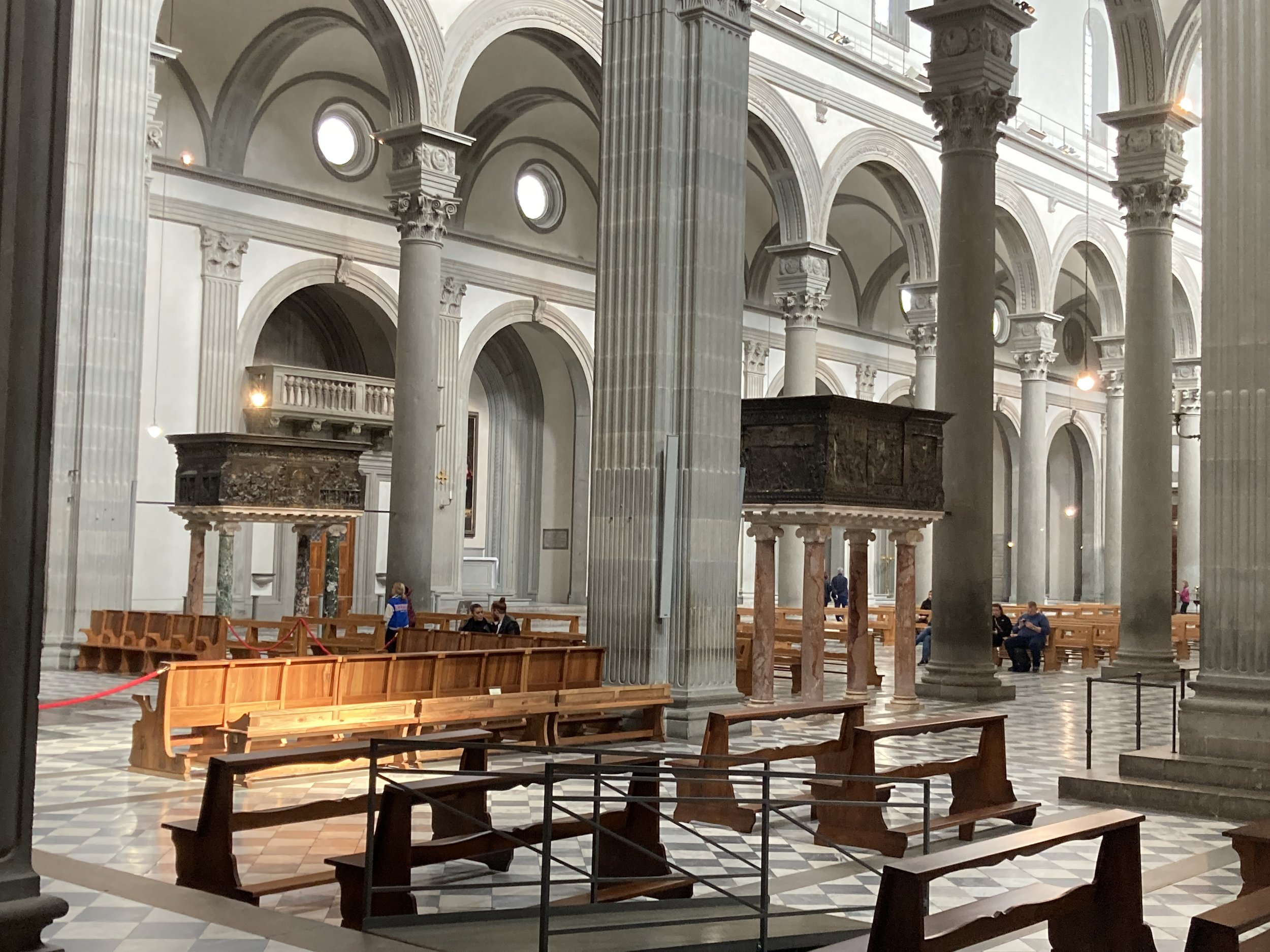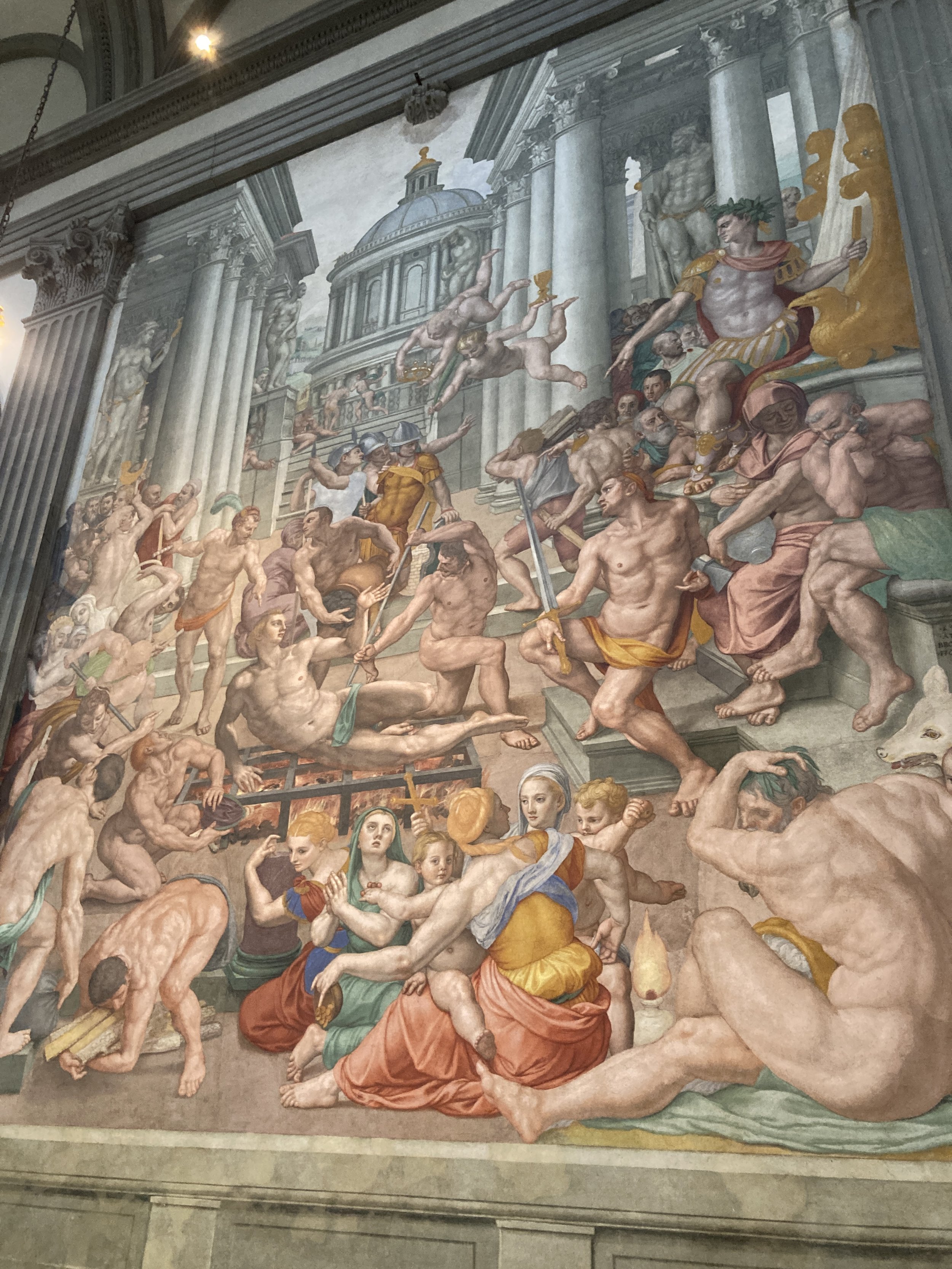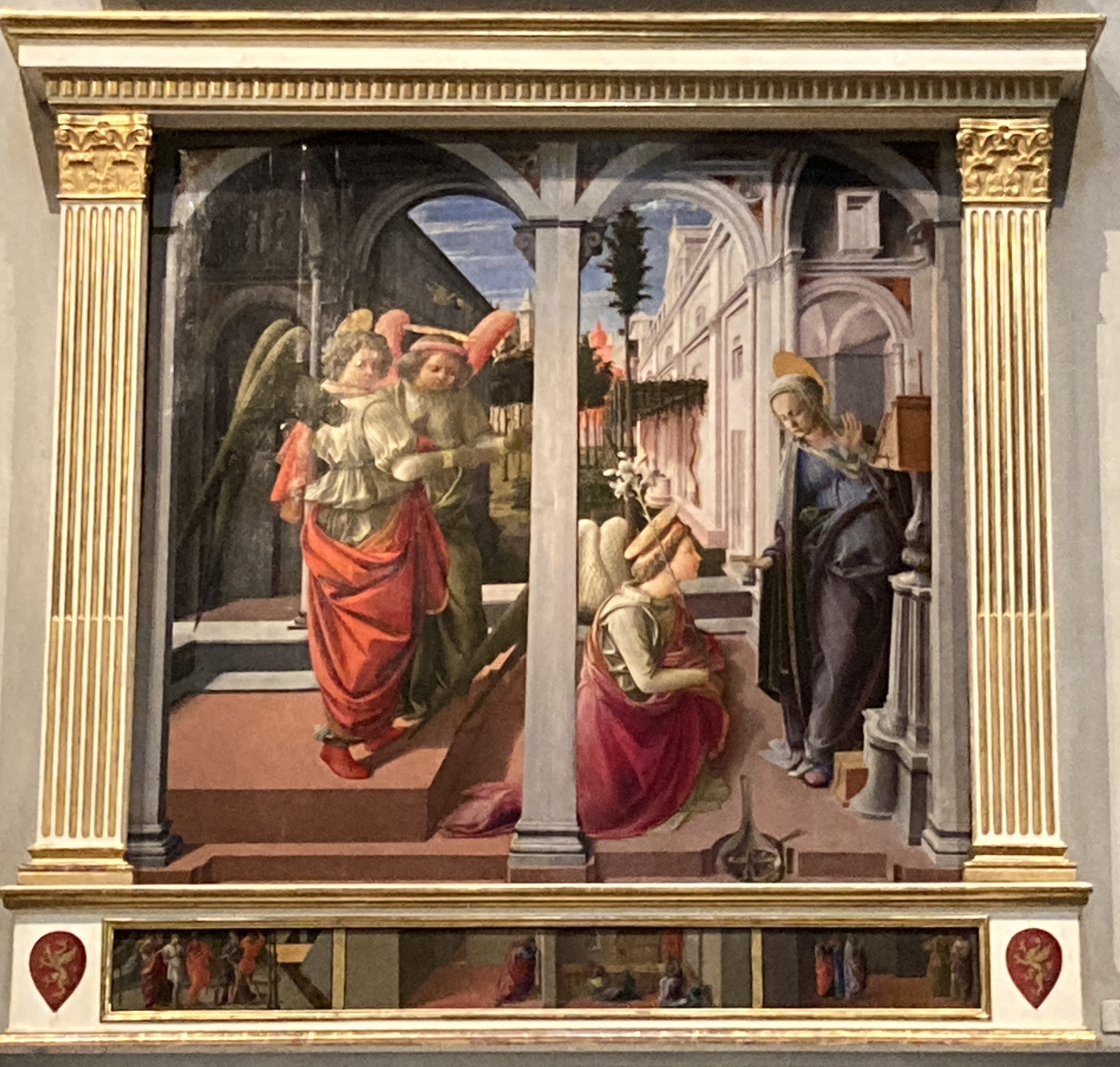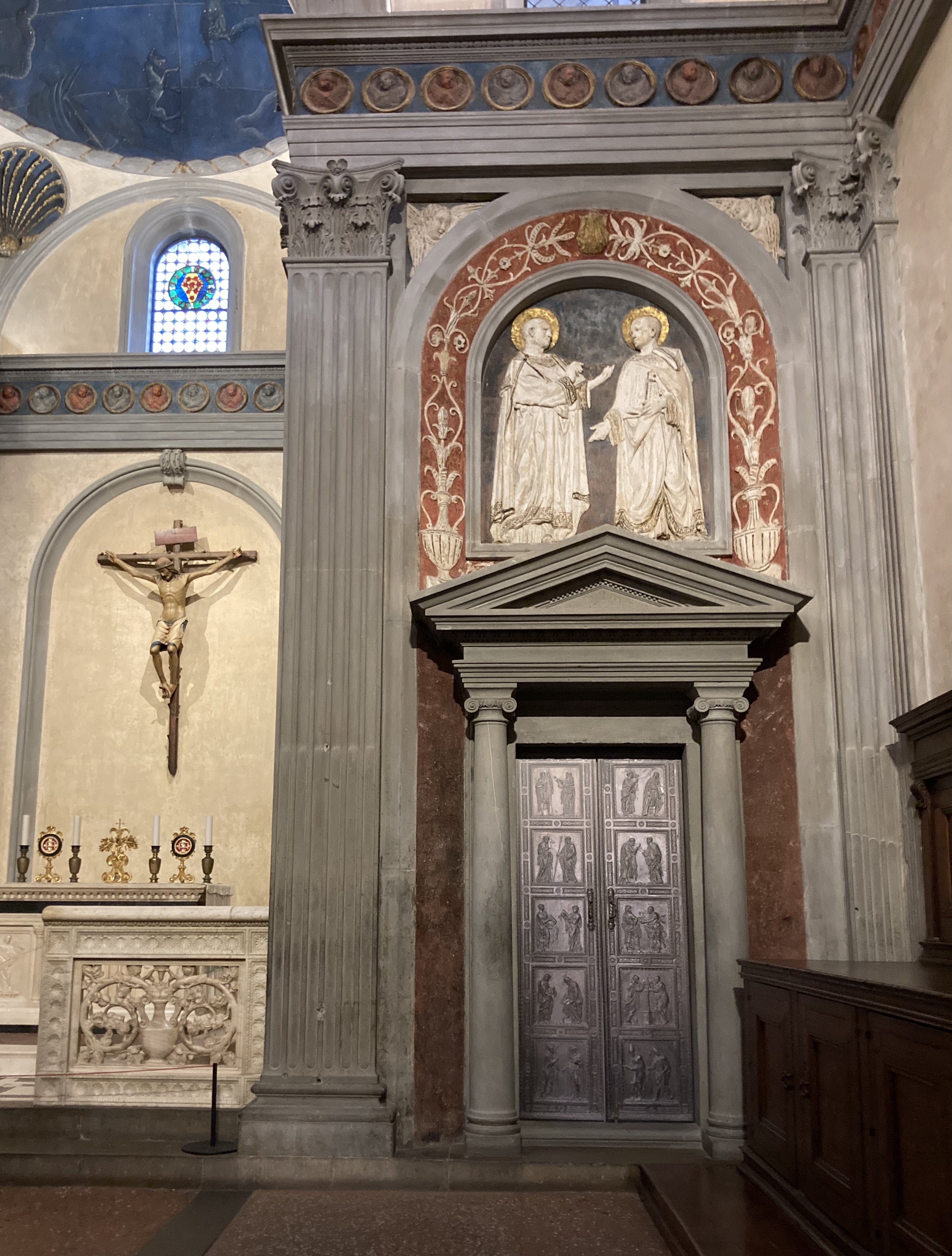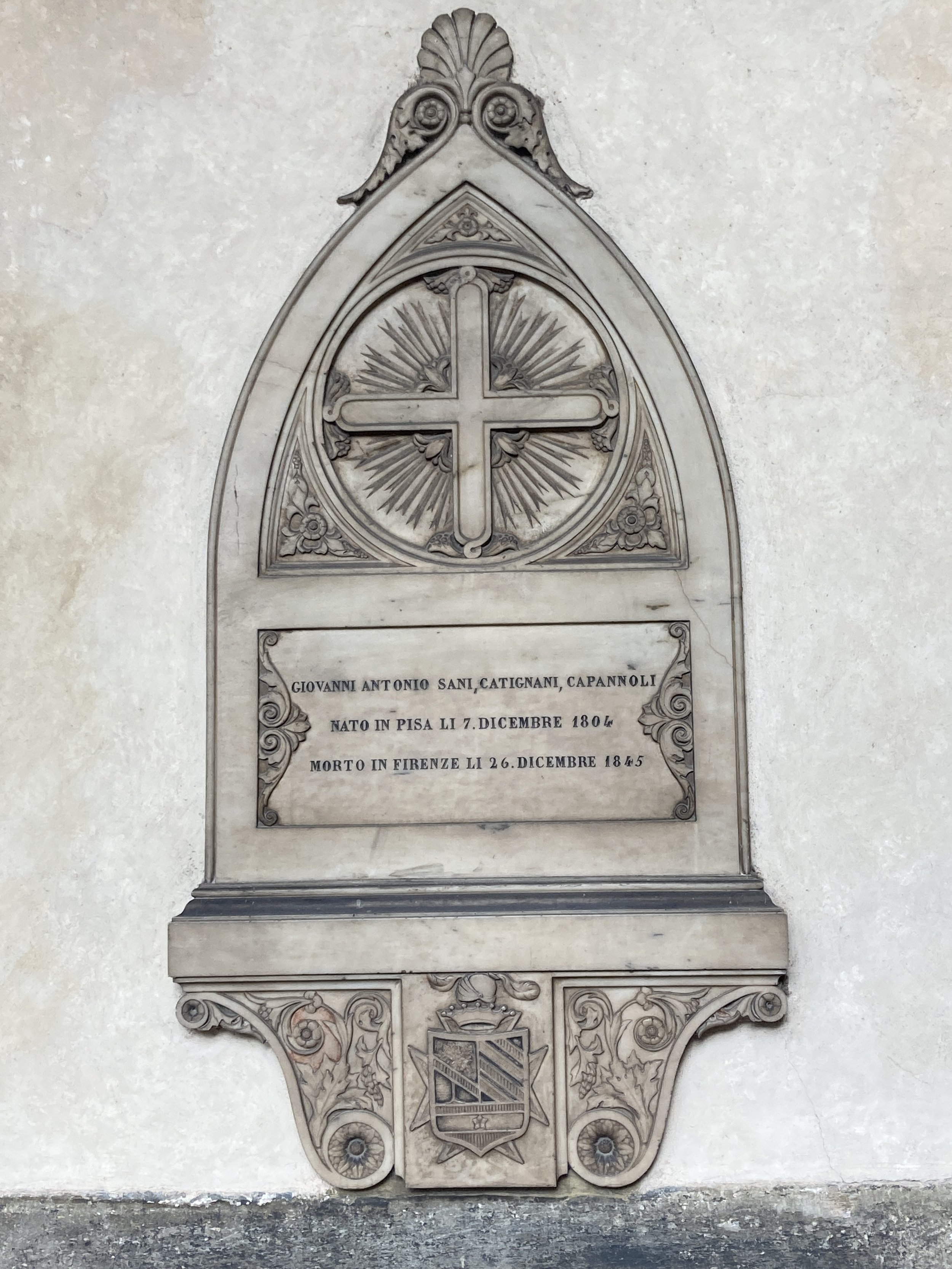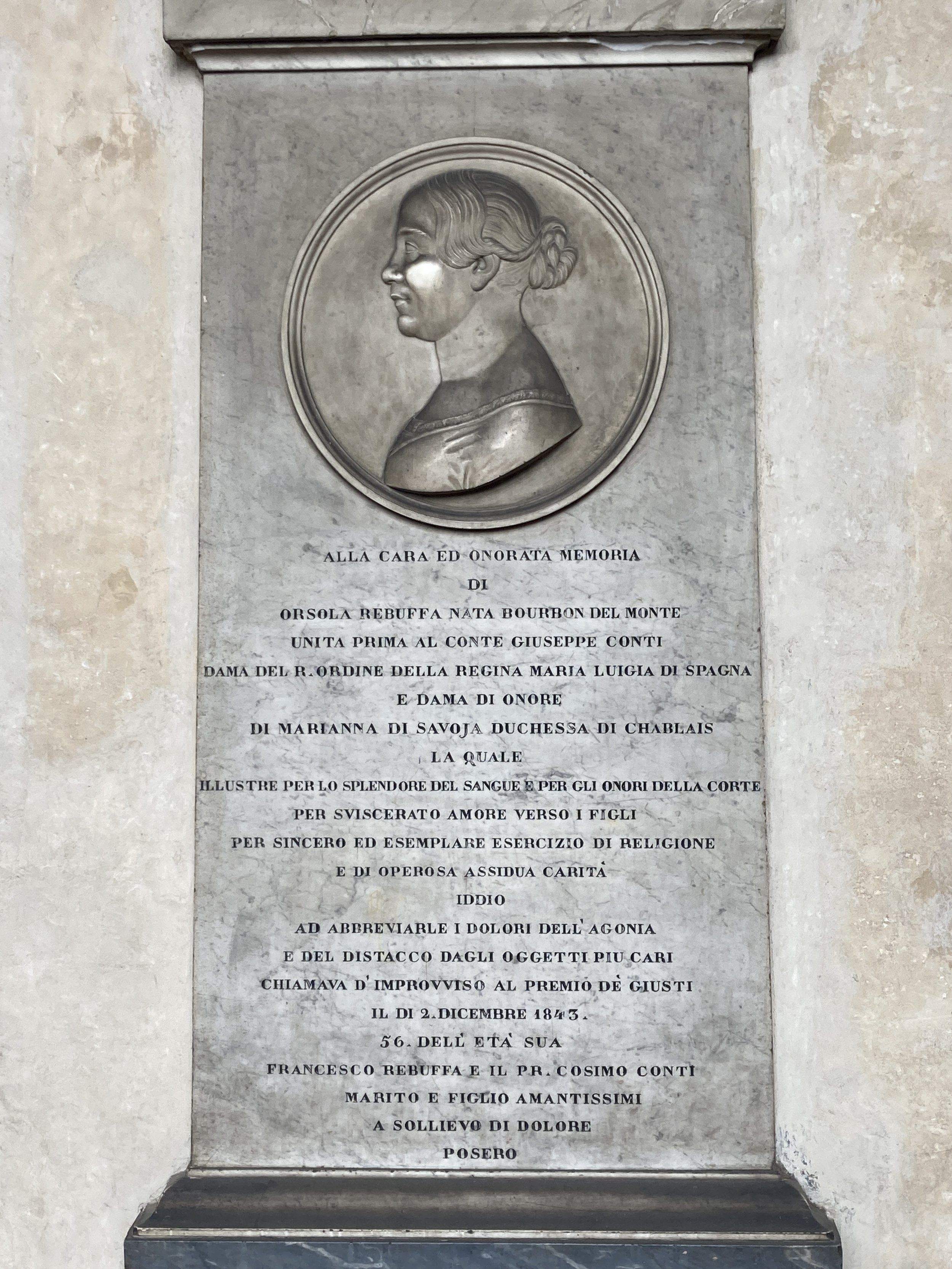The Basilica of San Lorenzo in Florence
It’s hard to have a favorite church in Florence. It may even be wrong to choose a favorite considering the number of historic and significant churches in the city. The Duomo, officially the Church of Santa Maria del Fiore, with its magnificent façade and campanile, is famous for good reason. Consider Santa Maria Novella, Santa Croce, Santissima Annunziata – and those are just the basilicas inside the historic center. Add in smaller churches, chapels, baptisteries, oratorios, bell towers and wonderful churches outside the center and, well, it would take years to explore them all. How could anyone choose a favorite?
Tomb of Berta Moltke Hwitfeldt, Corbelli Chapel, Basilica of San Lorenzo
And yet, I do have a couple of favorites. One is the Basilica of San Lorenzo, whose 4th century origins make it the oldest church in Florence. Redesigned by Brunelleschi in the 15th century, and completed after his death, it was the parish church of the Medici family, many of whom are buried there.
Detail, Basilica of San Lorenzo, Florence
San Lorenzo is more than just a church – the complex also has a museum, the Laurentian Library, and the Medici Chapels. Underneath the Medici chapels is a recently discovered hidden room with rough sketches by Michelangelo covering the walls. Right now it’s the hottest attraction in town but it was not yet opened during my November stay in Florence. The library is not always open, and a special ticket is needed for the Medici Chapel. The entire complex is a bit too much for one visit.
On my recent off-season stay in Florence, I stopped by on the spur of the moment and purchased a ticket which included only the cloister and church, both of which were uncrowded and just right for a short visit.
What is it that makes the San Lorenzo Basilica one of my favorites? It starts with the rough stone exterior. Unlike the polished marble façade of the Duomo, the San Lorenzo stands unadorned and underdressed. It was meant to have a white marble façade, designed by Michelangelo at the request of the Medici Pope Leo X. But the pope died, the money dried up, and the façade was never installed.
Inside, the basilica feels quiet and peaceful with its simple geometric floor anchoring graceful arches and columns in gray Pietra Serena (Serene Stone). The high, round, windows let in light through their clear glass. Even the ceiling, with its gold edged squares and central medallions (look for the Medici coat of arms) feels calming. Unlike more ornate churches (such as my other favorite, the very Baroque Santissima Annunziata), San Lorenzo has low contrast colors and finishes. This allows it to feel open and airy. The Basilica is a soothing space that supports quiet contemplation and an uncluttered mind.
Another reason to love this church is the way in which it showcases the work of Donatello. His two ornately carved pulpits, raised high atop marble columns in the center of the church, are considered his final masterpieces.
Donatello’s pulpits , Basilica of San Lorenzo
The church holds many remarkable pieces of art, but not so many as to be overwhelming. There are sculptures, including graceful tomb markers, and some significant paintings, many of which sit in small side chapels.
Bronzino’s The Martyrdom of St. Lawrence
Perhaps the two most well-known paintings are an Annunciation by Filippo Lippi (below, right) and the Betrothal of the Virgin by Rosso Fiorentino (below, left). Two very different styles, both captivating.
Old Sacristy, Basilica of San Lorenzo
The biggest reason for my love of this church is the small Sagrestia Vecchia (Old Sacristy). Designed by Brunelleschi, it was the only portion of the church completed before his death. His perfectly proportioned design incorporates a square room with a ribbed dome on top, several graceful arches, and the same gray and white colors of the main church.
Opposite the entry into the sacristy is a small marble altar, its design in white marble is in keeping with the simplicity of the rest of Brunelleschi’s design. Above the altar, in a smaller dome, is a remarkable blue and gold night sky. There has been some debate about the date represented by the constellations pictured. Initially it was thought to represent the day the altar was consecrated in July of 1422. Newer theories give the date as July 6, 1439, the date of the accord uniting the Eastern and Western branches of Christianity. Whichever date is correct, the constellations unite the sacristy with the heavens.
The constellations above the altar in the Old Sacristy, Basilica of San Lorenzo
In the center of the sacristy is the tomb of a Giovanni di Bicci de’Medici and his wife Piccarda Bueri. It was Giovanni who founded the Medici bank and set the stage for the Medici era in Florence. This seems like a fitting place for him to rest.
Not part of Brunelleschi’s original design, several elements were later added by Donatello at the request of the Medicis. These include a series of tondi (round decorations) which lie below the dome. The 4 in the corners represent the life of Saint John the Evangelist.
Detail, Donatello’s bronze doors, Old Sacristy
Donatello also designed the two bronze doors that flank the altar.
Apostles to the left, martyrs on the right.
The large reliefs above the doors, with St. Cosmos and St. Damian on the right and St. Stephen and St. Lawrence on the left, are also the work of Donatello.
(Note: There is also a New Sacristy but it is not accessible from inside the church, only from the Medici Chapels)
One of the relief decorations by Donatello above the bronze doors in the Old Sacristy.
The Basilica of San Lorenzo is not the largest or most ornate church in Florence. It wears no colorful marble facade. But it is stunning in its simplicity and is of great historical and architectual importance. When visiting, don’t miss the literature with a QR code which links to an audio guide. The audio descriptions greatly enhanced any visit.
Entry and Exit to the church is through the cloisters. This green space, surrounded by a two-story loggia, is a destination all of its own. The lower floor of the loggia surrounds a neatly kept space with low hedges and a big central tree. Under the arches is a walkway with walls filled with memorials to long ago Florentines. It’s a moving space embracing both the quiet of the church and views out into the “real world” of Florence. You can almost hear the rustling robes of those long ago monks as they walk through the cloister.
Cloister, Basilica of San Lorenzo
Hungry afterwards? Just outside the front entry is a wonderful lunch spot – the Trattoria San Lorenzo. A perfect way to end a visit to the church, enjoy a meal, and have time to organize memories of the basilica.




